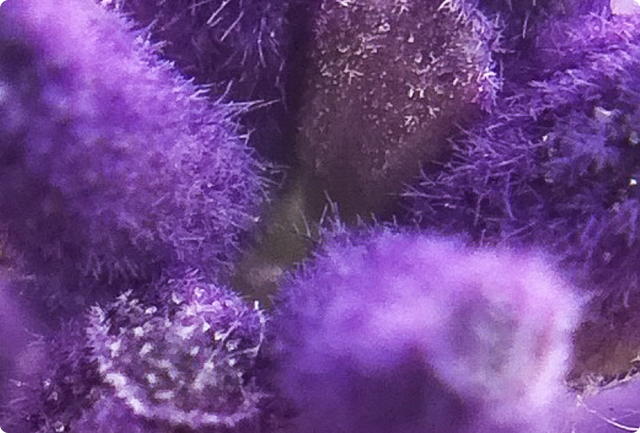About the Oil
Frankincense essential oil is distilled from the aromatic resins of various Boswellia trees, most notably Boswellia carterii, Boswellia frereana, and Boswellia serrata. Known as the “king of oils,” frankincense has a deep, balsamic, and woody aroma with subtle spicy-citrus undertones. Revered since antiquity, it has been used in spiritual rituals, incense, and traditional remedies across cultures. It's essential oil is prized in skincare, meditation blends, and emotional wellness formulas for its calming, clarifying, and rejuvenating properties.
Boswellia frereana, native to Somaliland, yields an oil rich in α-thujene and α-pinene, while Boswellia serrata, commonly found in India, is notable for its non-volatile boswellic acids in the resin (not present in the oil). Both species offer powerful aromatic and topical benefits with distinctive chemical profiles.
Why You Would Use Frankincense Essential Oil
- To soothe the mind and promote emotional grounding
- For meditation, breath work, and spiritual rituals
- To calm skin irritation and support skin tone
- In skincare for anti-inflammatory and astringent effects
- As a base note and fixative in natural perfumery
Clinical Findings
| Study | Participants & Methods | Summary | Reference |
|
Anti-inflammatory effects (B. frereana) |
Review of GC-MC analyses and model data |
α-pinene and limonene in B. frereana oil demonstrated inhibition of pro-inflammatory enzymes such as cyclooxygenase and 5-lipoxygenase, with resulting reductions in cytokines. |
Johnson et al.,2021 |
|
Neuro-modulatory benefits (B. frereana) |
Aromatherapy observations; in vivo mechanisms |
Volatile components like α-pinene showed anxiolytic effects and acetylcholinesterase inhibition, supporting memory and focus. Inhalation was associated with relaxation and mood improvement. |
Salehi et al.,2019 |
|
Antimicrobial activity (B. frereana) |
In vitro screening of commercial frankincense oils |
Terpenes such as sabinene, α-thujene, and β-pinene showed efficacy against common bacterial and fungal strains, explaining traditional oral and wound care uses. |
Van Vuuren et al., 2010 |
|
Cosmetic application (B.frereana) |
Internal assessment and CosIng classification |
Recognized as a fragrance and “skin-conditioning agent.” Used in serums and cleansers for its aromatic and astringent benefits. |
ECAM Monograph, 2025 |
Behind The Science
Frankincense oil’s bioactivity is driven by its terpene-rich composition. In B. frereana, the predominant monoterpenes—α-thujene, α-pinene, sabinene, and p-cymene—exhibit anti-inflammatory, antioxidant, and antimicrobial actions. These volatile compounds suppress cytokine production, scavenge free radicals, and inhibit bacterial growth, supporting the oil’s calming, skin-soothing, and protective functions. Unlike the resin, the distilled essential oil contains minimal Boswellia acids, so its benefits are largely aromatic and topical.
How and Where It Grows
Boswellia frereana grows wild on limestone cliffs in northern Somalia (Somaliland), where its pale-yellow resin is harvested manually during the dry season. Boswellia serrata thrives in the dry forests of India and has long been used in Ayurvedic medicine. Both types are steam-distilled to extract the essential oil, with yields typically around 3–6%.
Use in Ancient Medicine
Frankincense has been treasured for millennia in Egypt, Mesopotamia, and Christian and Islamic rituals. B. frereana, often called “Coptic frankincense,” was used in Orthodox liturgies and Somali traditional medicine for inflammation, arthritis, and skin conditions. B.serrata has been employed in Ayurveda for treating joint pain, asthma, and ulcers due to its rich boswellic acid content.
Symbolism
Frankincense represents reverence, spiritual insight, and purification. Its scent evokes sacred spaces and inward stillness, helping the user connect to a sense of calm and clarity. As a tool for ritual and healing, it is revered for bridging the physical and spiritual realms.
INFORMATION provided is intended for informational purposes only and is not meant to diagnose, treat, cure, or prevent any disease. Statements have not been evaluated by Health Canada or the FDA. Please consult a qualified healthcare provider before using essential oils for therapeutic purposes.
References
- Johnson, S. D., DeCarlo, A., Satyal, P., & Setzer, W. N. (2021). The chemical composition of single-tree Boswellia frereana resin samples. Natural Product Communications, 16(9).
- Van Vuuren, S. F., Steenkamp, P. A., & Benhura, M. A. (2010). Volatile composition and antimicrobial activity of twenty commercial frankincense essential oil samples. South African Journal of Botany, 76.
- Salehi, B., et al. (2019). Therapeutic potential of α- and β-pinene: A miracle gift of nature. Biomolecules, 9(11).
- Hamidpour, R., et al. (2013). Frankincense (乳香 Rǔ Xiāng; Boswellia species): From traditional applications to novel phytotherapy. Journal of Traditional and Complementary Medicine, 3(4), 221–226.
- Van Vuuren, Sandy & Kamatou, Guy Paulin & Viljoen, Alvaro. (2010). Volatile composition and antimicrobial activity of twenty commercial frankincense essential oil samples. South African Journal of Botany. 76. 686-691. 10.1016/j.sajb.2010.06.001.
- FDA (2025). Substances Added to Food (EAFUS): Olibanum oil (Boswellia spp.). U.S. Food & Drug Administration.





